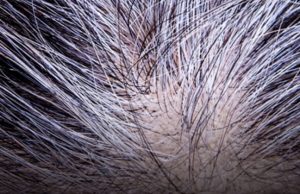9 Foods We’ve Been Washing Incorrectly

People who care about their health know that it is extremely important to wash their food products. The process seems really easy: just turn on a faucet and wash your food. But there are some nuances that are important to remember.
We’ve collected some common products that we all wash the wrong way.
Frozen fruits and vegetables
Frozen vegetables make life easy: just put them in the pan and boil them. But you should know that before you freeze them, vegetables are washed with water. Many people don’t wash frozen produce before using it, and it’s fine if you’re cooking it at a high temperature. But if you prefer your vegetables al dente, you should wash them carefully and cook them in the same way as fresh vegetables in order to get rid of dirt and bacteria.
Rice
Have you ever noticed that rice cooking instructions often say to rinse the rice? If you skip this step, you’re not alone, but it’s time to change your ways. Rinsing removes debris, but more important, it removes surface starch, which is what leads to clumpy, gummy rice. So, grab that strainer and give your grains a good wash. The water doesn’t need to run clear, but a thorough rinse will bring you one step closer to fluffy, tender rice .
Mussels and oysters
You need to wash all seafood with shells thoroughly, even if you buy frozen products, as they may be full of sand and grit. Otherwise, you will be eating all that “waste”. We don’t think you like using sand as a seasoning!
Milk and dairy products
It’s recommended to wash the packaging of milk, yogurt, and other liquid products before opening them. Thousands of customers touch these packs, pick them up, and read the information on the labels. As soon as we open the bottle, the bacteria from people who’ve previously handled the container can easily get inside.
Fish
It is not necessary to wash raw fish, unless you eat it raw. High temperatures kill all bacteria, and if you wash raw fish, you risk spreading bacteria all over your kitchen. Keep in mind that you must wash your hands, your cutting board, and your knife after cutting.
No matter what type of cabbage, you must wash it thoroughly. If you are going to cook cauliflower, which is actually in the same cabbage family, you have to clean all the nooks and crannies and separate it into pieces. If you want to cook red or white cabbage, you have to remove the top 2 layers, as they can hide dirt and dust. To get rid of bugs and bacteria, put the cabbage in a sink full of water, add a little vinegar, and leave for a few minutes. Then rinse the cabbage with clean water.
Canned beverages
Canned drinks come in handy during hot summer days: a can keeps your beverage cold and makes it even tastier. But don’t gulp a can of soda without first washing it or at least wiping the top. You know that all cans usually travel in dusty trucks and people at stores always touch them. By the way, if you have an opportunity, pour the contents from the can into a glass.
Bagged Lettuce
It may be tempting to wash bagged lettuce, but if it’s labeled “prewashed,” “ready-to-eat” or “triple-washed,” it’s safer to use it as is. The reason? Washing those greens simply opens the door for contamination from bacteria already in your kitchen. This rule applies to other bagged items like precut carrots, as long as they’re labeled the same way. The bottom line? Tonight’s salad prep just got significantly speedier. (Try this Apple-Cranberry Spinach Salad with Goat Cheese tonight!)
Apples
The healthiest fruits are young fruits that do not undergo any special treatment. If you want to eat an apple in winter, for example, you have to wash it. Studies show that if you soak the fruit in water and baking soda for 12 minutes, most of the chemicals will be washed away.
Do you have your own cooking tips? Tell us in the comments!
Source:eatingwell.com, brightside.me















